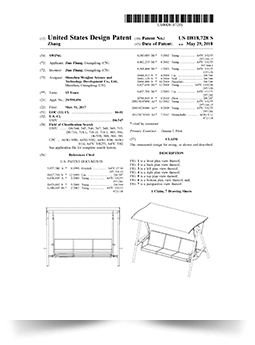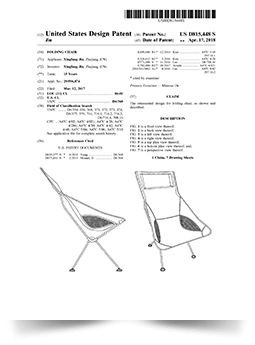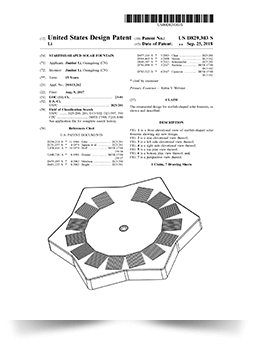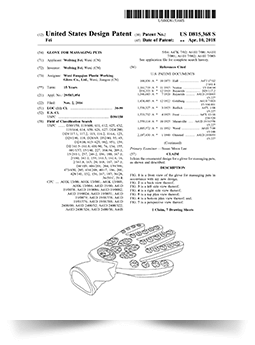




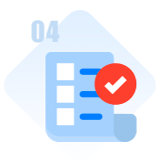

Step One
Preliminary Assessment and Drawings
A licensed patent agent will review your information and provide advice and suggestions for improvement
Based on your photos or sketches, our technical illustrator will create up to 7 different viewpoints of professional drawings including front, back, left, right, top, bottom and 3-sided perspective.
For an additional $295, we can conduct a comprehensive search for published patents and applications in your field of invention, and your patent attorney or agent will advise you on the results.
Step Two
Prepare and File Your U.S. Design
A licensed patent agent will review your information and discuss your application with you.
Your patent attorney or agent will prepare your application with the Patent Office. (Electronic filing ensures the earliest possible filing date)
Your patent attorney or agent will electronically file your completed application with the USPTO.
* $260 govt fee assumes you are classified as "micro entity" by USPTO. If you have filed more than 4 non-provisional patent apps in the past, or have an annual income of greater than $241,830, you may be classified as "small entity" which requires a $520 govt fee.
Ask legal questions and get advice about patent applications from an experienced patent professional.
While you wait for your design patent application to be reviewed by the US Patent Office, you get legal "patent pending" status
We are always here ready to answer your questions about the patent process or any other legal questions
Drawings that meet design patent application requirements, shaded to show your design's depth and form.
Design patent writing necessary for a design patent application.
You will receive an official receipt from the US Patent Office confirming acceptance of your patent application and showing your patent application number.
It's the first step before a patent application! First, you learn how patentable your invention may be.
If it's not very patentable, don't waste time and money on a patent application. Second, it may help you increase your patentability.
By seeing what is similar, you can improve your invention around other existing inventions and increase patentability.

A design patent protects how your invention looks
Design PatentProtects the shape of the invention only.
Does not stop someone from making the invention if they make it with a different exterior shape.
Cannot explain how the invention works and how it is put together.
A utility patent protects how your invention works
Utility PatentProtects how the invention works.
Can stop someone from making the invention, regardless of the invention's shape.
Must explain how the invention works and how it is put together.



